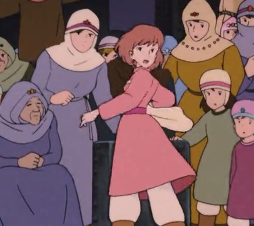
REPRESENTATION OF FEMINISM IN NAUSICAA’S CHARACTER EXPLICIT TRAIT
Abstract
The media has the power to attract its audience to believe in what they consume. The depiction of feminism in female characters in animated films are still mainly focused on the visual aspect, with personalities that tend to be sexual and passive. Female character design needs special attention to show variations in capabilities, providing a positive view to the audience. Therefore, this research aims to identify design elements of characrer’s explicit traits that can be used as categories in analyzing the representation of feminism in female character design. The research uses a content analysis method to analyze the animated film Nausicaa of the Valley of The Wind from Studio Ghibli, the movie was released on 1984 during a change in perspective towards women empowerment in Japan. The film is analyzed using three categories of character’s explicit trait, which are body shape, costume and atributes. The movie is separated into segments that fit the power-with category in the depiction of feminism in film, the researcher identifies each segments based on the categories. This research conclude that the character’s explicit traits represent the third-wave of feminism, those traits explained the process and outcome of the character’s experience and fight throughout the film. They also portrays an active female character.
Keywords
DOI: https://doi.org/10.24114/gr.v13i2.62381
Article Metrics
Abstract view : 62 timesCopyright (c) 2024 Laurencia Karenina Baskarani, Banung Grahita

This work is licensed under a Creative Commons Attribution-ShareAlike 4.0 International License.
![]()
![]()
![]()
Gorga : Jurnal Seni Rupa
Email: gorgajurnalsenirupa@unimed.ac.id
Jl. Willem Iskandar, Pasar V, Medan Estate, Medan City, North Sumatra Province, Postal Code 20221. Phone/fax: (061) 661 3365 / +6285278021981.
This work is licensed under a Creative Commons Attribution-ShareAlike 4.0 International License







